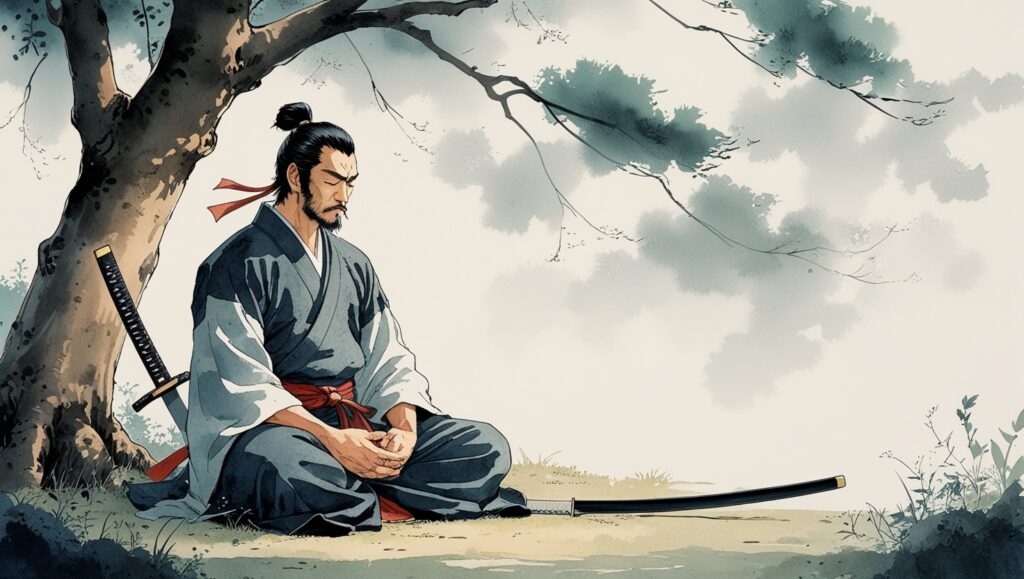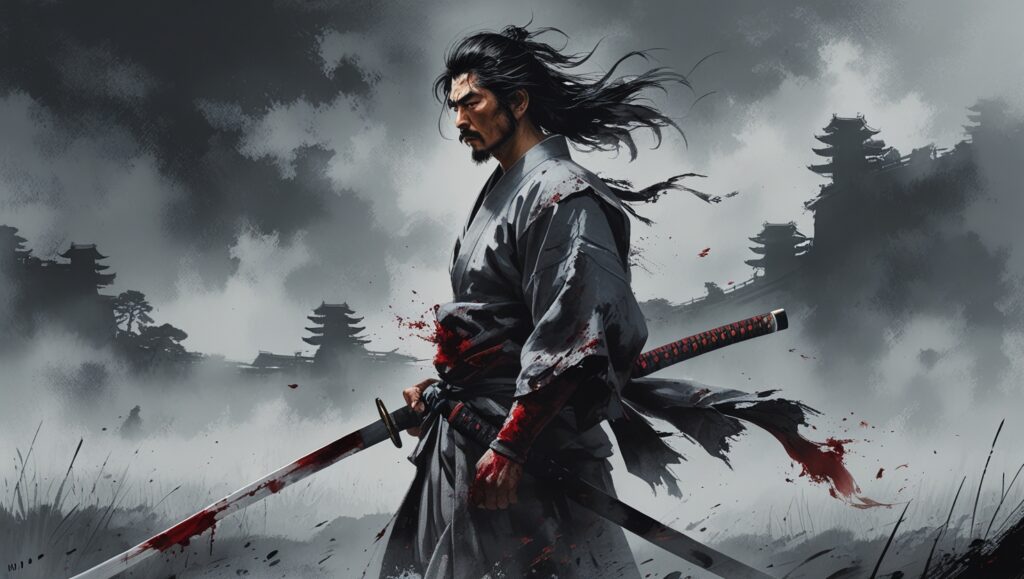Let’s get one thing straight: Vagabond Manga isn’t just a manga, it’s an experience. Whether you’re a samurai-era geek, a sucker for jaw-dropping art, or just someone who likes their stories with a side of existential dread, this one’s going to hit you right in the soul.
I still remember the first time I picked up Vagabond by Takehiko Inoue. I went in thinking, “Okay, cool, swords and samurai. Let’s go.” I came out of it questioning my life choices, moral compass, and why my pen doesn’t draw like Inoue’s brush.
Let’s talk about why Vagabond slaps harder than your morning coffee.
The Art That Deserves a Museum Wall
Before you even get to the plot or characters, the art will snatch your soul. Every page feels like it was painted by a Renaissance master with a katana in one hand and a calligraphy brush in the other.
Seriously, Takehiko Inoue doesn’t draw manga; he sculpts it with ink.
From sweeping landscapes to raw, sweaty fight scenes, you can literally feel the weight of the world in every panel. There’s this one double-page spread of Musashi mid-battle, and I swear I stared at it longer than I’ve looked at some paintings in a gallery. It’s that good.
Pro tip: don’t read Vagabond on a small screen. Get a physical volume. Trust me.
Musashi Miyamoto: Not Your Typical Shonen Protagonist
So who’s this Musashi guy everyone won’t shut up about?
Well, he’s based on a real dude — Miyamoto Musashi, the legendary swordsman and author of The Book of Five Rings. But Vagabond‘s Musashi is messy, brooding, often dumb, and dangerously relatable.
He starts off as this violent, chaotic force of nature who just wants to be “invincible under the sun” (not a humble goal, my dude). But as the series progresses, Musashi starts asking deeper questions. Like, what does “invincible” even mean? Can you chop your way to inner peace?
It’s like watching a guy swing a sword at life’s big questions. Literally.
The Existential Weight of Every Swing of Vagabond Manga
What really sets Vagabond Manga apart is its willingness to slow down. You’ll have entire chapters where nobody fights. Sometimes, Musashi just stares at a tree. Or he gets injured and spends 100 pages meditating in a cave. And weirdly? It never feels boring.
That’s because this manga isn’t just about swordsmanship. It’s about growth, fear, trauma, and the kind of solitude that creeps in when you dedicate your life to something so single-mindedly.
Honestly, Vagabond could double as a meditation manual if you squint hard enough.
Side Characters That Deserve Their Own Spin-Offs in Vagabond Manga
Takuan the monk. Otsu. Kojiro. Matahachi (bless his messy soul). Even side characters in Vagabond feel painfully real. You may not agree with all of them, but you understand them.
Takuan, especially, feels like the philosophical backbone of the story. His dialogues with Musashi often read like Zen riddles, but they’ll linger in your brain for days.
And Kojiro? My man doesn’t even talk and still has one of the most compelling character arcs I’ve ever read. How does that even work? Inoue magic, that’s how.
The Fights? Brutal, Real, and Gut-Wrenching
You know those over-the-top, Dragon Ball-style power-ups? Yeah, none of that here. A sword slash in Vagabond feels final. People die. Quickly. And messily.
It’s more Saving Private Ryan than Naruto. And that realism only adds to the weight of each duel. You can see the terror, the hesitation, the adrenaline.
I once had to take a breather after a particularly intense duel. It was that real.
A Vagabond Manga That Ages With You
Here’s the wild part: every time I reread Vagabond, I take something different from it. At 19, it was all about badass sword fights. At 25, I felt the sting of Musashi’s loneliness. Now in my 30s, I’m catching all the philosophical layers and life regrets.
That’s the mark of a true masterpiece. It grows with you.
Is Vagabond Manga For Everyone?
If you want light-hearted escapism or rom-com hijinks, this ain’t it, chief.
But if you’re in the mood for something introspective, slow-burning, and visually stunning, then Vagabond is absolutely worth your time.
And hey, even if you just want to stare at pretty sword fights, there’s still plenty to enjoy.

The Elephant in the Room: It’s Still Not Finished
Ah yes, the heartbreak. Vagabond is famously on hiatus. It’s been years. And yeah, we might never see the end.
But honestly? Even unfinished, it feels whole. The journey is the story. And who knows — maybe Inoue is just pulling a Musashi and meditating in a cave somewhere.
We can hope.
Tips If You’re New to Vagabond
- Read the physical editions: The art deserves it.
- Don’t binge it in one go: Let it simmer. It’s more like sipping aged whiskey than chugging soda.
- Bring a journal: Not kidding. You might want to jot down some of those Takuan lines.
Vagabond Manga vs. Reality: Musashi the Legend vs. Musashi the Human
One of the coolest things about Vagabond is how it re-humanizes a historical legend. In history books, Musashi is this almost mythical figure. But in this manga, he bleeds, he limps, he screws up. He has panic attacks.
It takes the sword saint off the pedestal and lets you walk beside him.
It’s Not All Dark and Gloomy
Sure, it’s deep and serious. But Vagabond has its light moments. Like Musashi getting freaked out by deer. Or Matahachi being… well, Matahachi. There’s a weird, earthy humor that keeps it from becoming too heavy.
It’s like life: messy, tragic, and occasionally hilarious.
The Brushwork: A Class of Its Own
Inoue uses brush and ink instead of digital tools, and it shows. The textures. The shadows. The raw motion. There are moments where the brushwork feels alive.
It’s probably the closest manga has come to being high art.
Why I Keep Recommending It to Everyone
Because it’s timeless.
Vagabond Manga isn’t about swords. It’s about the human condition. It’s about fear, ambition, loneliness, purpose, and the long, slow climb to self-acceptance.
Every time I hand someone Volume 1, I’m not just giving them a book. I’m handing them a journey.
Final Thoughts: Should You Read Vagabond?
If you want a manga that punches you in the gut and kisses your soul at the same time, Vagabond is it.
And even though it may never be “finished,” it’s one of the most complete stories I’ve ever read.
Don’t read it for closure. Read it for the ride.
FAQs
Q: Is Vagabond manga complete?
A: Nope, it’s on indefinite hiatus. But don’t let that stop you — what exists is worth every page.
Q: Is Vagabond historically accurate?
A: Loosely. It takes creative liberties but keeps the spirit of Musashi’s legend.
Q: How many volumes of Vagabond are there?
A: There are 37 volumes, with the last one released in 2015.
Q: Is Vagabond suitable for younger readers?
A: It deals with mature themes and has graphic violence. Probably best for 17+.
Q: What makes Vagabond different from other samurai manga?
A: Its philosophical depth, breathtaking art, and grounded realism set it apart.
